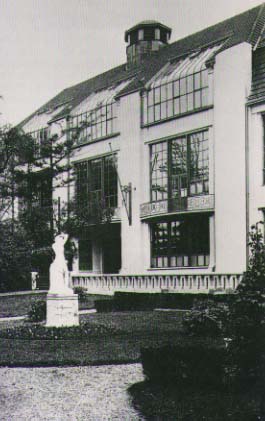|
 Bauhaus at Weimar, built by Henry van de Velde. -- Whitford, Frank. Bauhaus. 1918The Weimar period experienced an explosion of literature, science, art, and music. In the area of social science the Frankfurt School dominated with contributions by Max Horkheimer, Theodor Adorno, and Walter Benjamin. Expressionism developed with the contributions of Ernst Ludwig Kirchner and Franz Marc leading to new art forms such as cubism, futurism, and Dada. The field of literature experienced great advances during this period due to accomplished works or prose, poetry, and drama by names such as Thomas Mann, Hermann Hesse, Rainer Maria Rilke, and Bertolt Brecht. 1919Founded and Directed by Walter Gropius. Teachers include Lyonnel Feininger, Gerhard Marcks, and Johannes Itten
1924
 1925
Return Home |